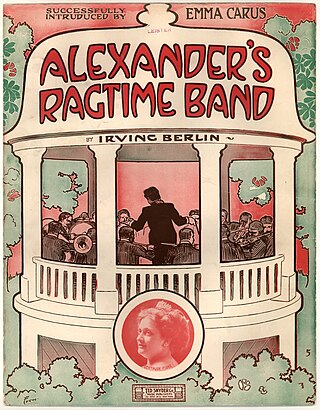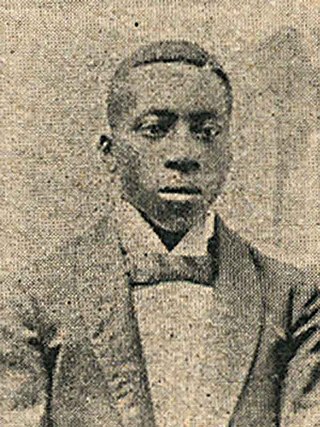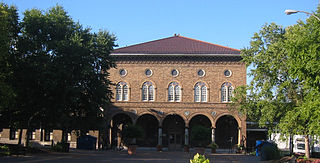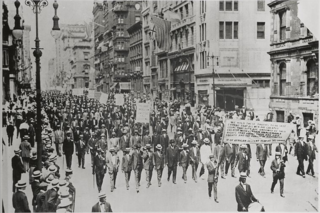
Ragtime, also spelled rag-time or rag time, is a musical style that had its peak from the 1890s to 1910s. Its cardinal trait is its syncopated or "ragged" rhythm. Ragtime was popularized during the early 20th century by composers such as Scott Joplin, James Scott, and Joseph Lamb. Ragtime pieces are typically composed for and performed on piano, though the genre has been adapted for a variety of instruments and styles.

Scott Joplin was an American composer and pianist. Dubbed the "King of Ragtime", he composed more than 40 ragtime pieces, one ragtime ballet, and two operas. One of his first and most popular pieces, the "Maple Leaf Rag", became the genre's first and most influential hit, later being recognized as the quintessential rag. Joplin considered ragtime to be a form of classical music meant to be played in concert halls and largely disdained the performance of ragtime as honky tonk music most common in saloons.

Booker Taliaferro Washington was an American educator, author, and orator. Between 1890 and 1915, Washington was the primary leader in the African-American community and of the contemporary Black elite.

"Alexander's Ragtime Band" is a Tin Pan Alley song by American composer Irving Berlin released in 1911; it is often inaccurately cited as his first global hit. Despite its title, the song is a march as opposed to a rag and contains little syncopation. The song is a narrative sequel to Berlin's earlier 1910 composition "Alexander and His Clarinet". This earlier composition recounts the reconciliation between an African-American musician named Alexander Adams and his flame Eliza Johnson as well as highlights Alexander's innovative musical style. Berlin's friend Jack Alexander, a cornet-playing African-American bandleader, inspired the title character.

Freda Josephine Baker, naturalized as Joséphine Baker, was an American-born French dancer, singer, and actress. Her career was centered primarily in Europe, mostly in France. She was the first black woman to star in a major motion picture, the 1927 French silent film Siren of the Tropics, directed by Mario Nalpas and Henri Étiévant.

Benjamin Oliver Davis Sr. was a career officer in the United States Army. One of the few black officers in an era when American society was largely segregated, in 1940 he was promoted to brigadier general, the army's first African American general officer.

Arthur Owen Marshall was an American composer and performer of ragtime music from Missouri. He was a protege of famed ragtime composer Scott Joplin.

Thomas Million John Turpin was an American composer of ragtime music. Turpin is credited with the first published rag by an African American, his "Harlem Rag" of 1897.

Soulard is a historic neighborhood in St. Louis, Missouri. It is the home of Soulard Farmers Market, the oldest farmers' market west of the Mississippi River. Soulard is one of ten certified local historic districts in the city of St. Louis.
Joseph Taylor Jordan was an American pianist, composer, real estate investor, and music publisher. He wrote over 2000 songs and arranged for notable people such as Florenz Ziegfeld, Orson Welles, Louis Armstrong, Eddie Duchin, Benny Goodman, and others.
This is a timeline of music in the United States from 1880 to 1919.
African Americans in Davenport, Iowa comprise the third-largest black community in Iowa, with a history that precedes the Civil War.

The Negro Silent Protest Parade, commonly known as the Silent Parade, was a silent march of about 10,000 African Americans along Fifth Avenue starting at 57th Street in New York City on July 28, 1917. The event was organized by the NAACP, church, and community leaders to protest violence directed towards African Americans, such as recent lynchings in Waco and Memphis. The parade was precipitated by the East St. Louis riots in May and July 1917 where at least 40 black people were killed by white mobs, in part touched off by a labor dispute where blacks were used for strike breaking.

The Griot Museum of Black History is a wax museum in St. Louis, Missouri, founded in 1997. Originally named The Black World History Wax Museum, the organization changed its name to The Griot Museum of Black History in 2009. In some west African countries, the griot, is a historian, storyteller, praise singer, poet and/or musician. The griot is a repository of oral tradition and is often seen as a societal leader who preserves and shares cultural traditions of a community. Likewise, the museum collects, preserves, and shares the stories, culture, and history of Black people with a focus on those with a regional connection to St. Louis.
Robert T. Motts was an African American saloon owner and gambling racket leader, who established and managed Chicago's Pekin Theatre, an epicenter of African-American theater. Motts was an organizer in the Republican Party. He also owned theaters in New York City.
Chestnut Valley was an African American section of St. Louis centered on Market Street, Targee Street, and Chestnut Street. It existed from the late 19th century serving steamship workers plying their trade on the Mississippi on into the 20th century. These were segregated eras. Chestnut Valley was a font of ragtime music development with Tom Turpin's Rosbud Café from 1900 to 1906 succeeding venues and later his brother Charles H. Turpin's Booker T. Washington Theatre. Mill Creek Valley, home to Scott Joplin and Josephine Baker, was adjacent. Union Station was nearby.
George L. Vaughn was an American lawyer and judge active in St. Louis, Missouri. As a lawyer, he was involved in a prominent civil rights case involving housing discrimination, most notably Shelley v. Kraemer, in which the eviction of an African American family from a white neighborhood was upheld by the Missouri Supreme Court but subsequently overruled by the U.S. Supreme Court.
The Citizen's Liberty League was a political organization established in Missouri to advance the interests of African Americans in the Republican Party. It addressed the policies of segregation, exclusion, and discrimination in the state. It was established in 1919 in Pythian Hall.
Waters Edward Turpin was an American novelist, professor, playwright, and textbook author. He gained prominence during the later half of the Harlem Renaissance, and was known for his work in African-American literary history. Turpin published three novels.












